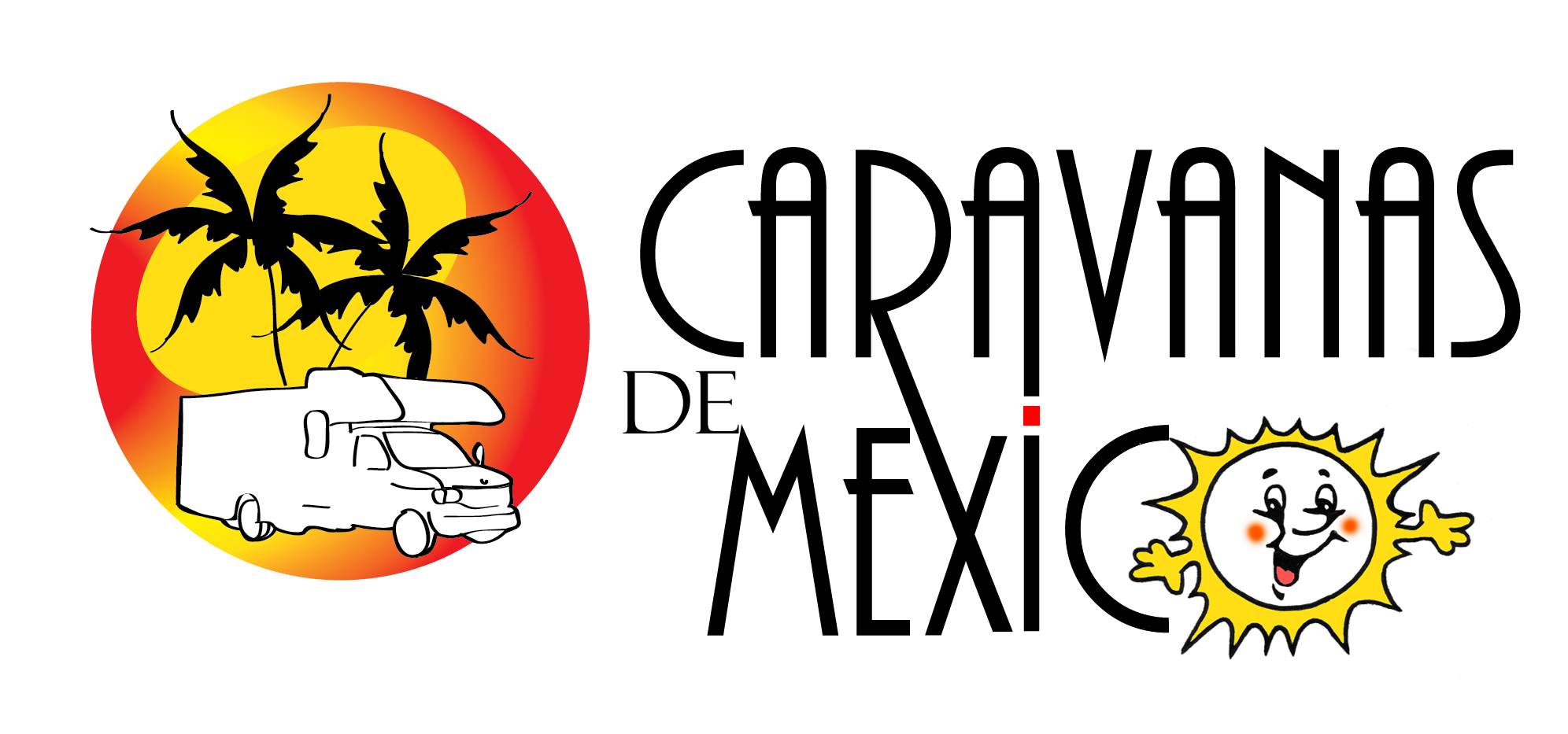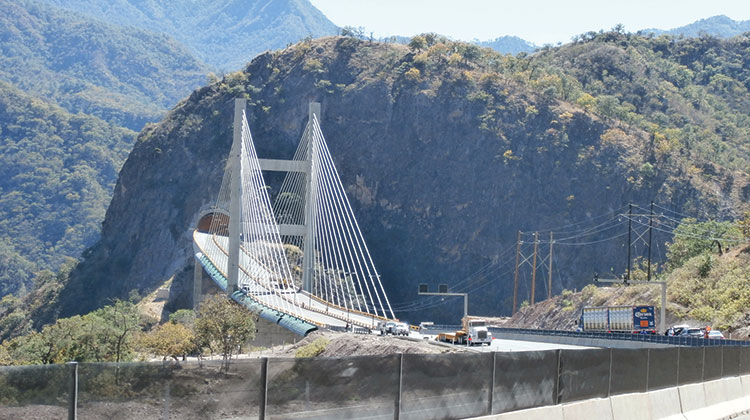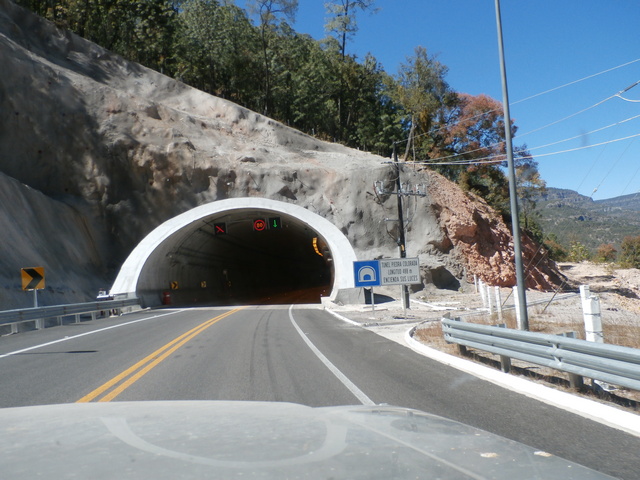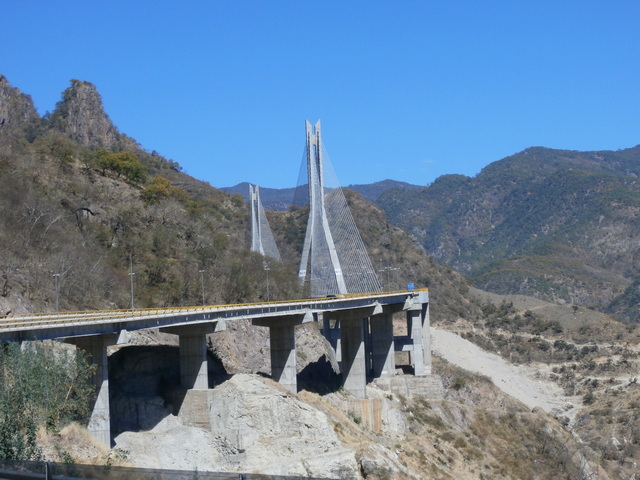

Highway 40D Mazatlan - Durango
Paul Beddows
Former Wagon Master
Article originally published in RV Life March 2015
Some info has been updated

In 2014 I first drove Highway 40D, the new toll highway in northern Mexico that connects Mazatlan on the coast with Durango in the interior. This highway is a replacement for what is known as the “Devil’s Backbone,” one of the world’s most dangerous highways.
The only caravans we currently run that use this route, are our colonial loop and an Airstream trip.
The Mexican government had been quite anxious to build a new route through this mountainous region to facilitate the movement of goods from the interior of Mexico to the coastal port of Mazatlan. Previously, the only easy connection was via Guadalajara, far to the south. That route, besides being dangerous and infamous for burning out the brakes of trucks and RVs alike, went through an area controlled by drug cartels, making transit risky. The new highway solves both problems. The opening of this highway was delayed for two or three years due to the engineering challenges involved. Its completion required the construction of 62 tunnels (one three kilometers long) and 15 major bridges, including the Baluarte Bridge, which spans a 2,000-foot deep canyon, and is one of the world’s highest. The new route reduces transit time from seven hours to only three.

The highway spans the region that contains Copper Canyon and the scenery is very similar to that which you see from the train trip to that attraction. Unfortunately the Mexican government does not believe in viewpoints, so stopping along the route is difficult to say the least. In fact when I drove it, several people were stopped in the middle of the four-lane Baluarte Bridge so they could peer over the side. My wife, who is terrified of heights, would not let me do likewise.
The route obviously has a lot of truck traffic and much of the highway is only two lanes. You have to be careful to watch for trucks passing each other where they should not. Passing in tunnels does not appear to be taboo in Mexico.
This route has opened up a new option for RV caravans, allowing them to do a circle route of Colonial cities without backtracking. It also provides the option for those entering Mexico in the east to transit to the west coast without taking the long way through the Southwest U.S. The toll charges are, however, quite steep. It cost me over $100 in tolls, but was well worth it. Access to the highway from the east is from the northwest corner of Durango. From the west it is south of Mazatlan, well past the air- port and the town of Villa Union. It is well signed at the Mazatlan end, not so much at the Durango end.
For RVers, the main issue has been the lack of RV parks in Durango. On a scouting trip last April for Caravanas de Mexico, I found a motel, the Villas Aragon, that has a huge internal parking lot easily accessible for RVs. You could easily fit a 20-rig caravan in there. To get there, head to the west end of Durango on the ring road, then follow Highway 45 toward the center of Durango. Look for Pemex 3939 on your left. Park there and walk a half block far- ther to check it out first. Since it is on a divided road, you have to circle the block to get into it, but it is OK for RVs. Check it out on Google Earth first. The route you have to take has been mapped on Google Street View. I found another option on alater trip, The Balenario San Juan Hot Springs. Dry Camping is available here. GPS N 24.052894 W 104.545367

The next obvious destination from Durango is the wonderful colonial city of Zacatecas. This is about a three-hour drive over a previously lonely road that has had some incidents. However, the increased truck traffic from the new route has made this stretch a lot safer, and you should have no problems. I spoke to the head of the Federales for the state of Zacatecas who assured me this stretch of highway was now secure. However, traveling in a group in Mexico is always a good idea.
The city of Zacatecas is one of the nicest colonial cities in Mexico and is reminiscent of a Spanish city like Barcelona. Its Roman-style aqueducts lends to that impression. Do not miss riding the cable car across the city or touring the massive El Eden gold and silver mine. Zacatecas has a couple of RV parks to choose from.
Give the new highway a try, either on your own if you are comfortable with that, or with one of the RV caravan companies that is starting to use it. You won’t regret it.